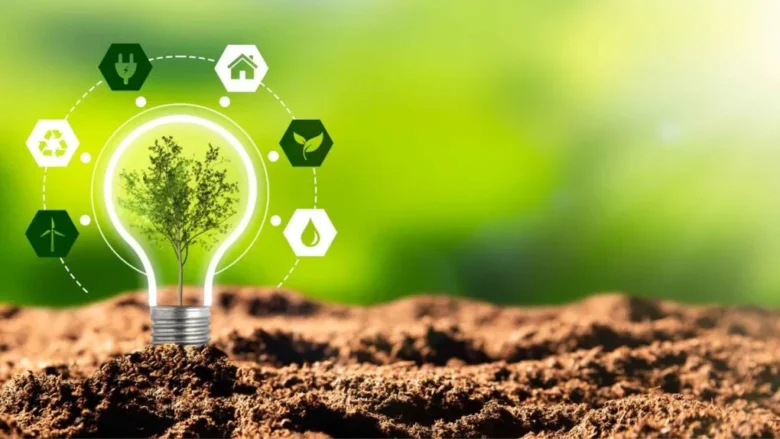Climate change is one of the most important challenges of the 21st century. It threatens not only the environment but also the economy, society, and future generations. Rising temperatures, extreme weather events, rising sea levels, and changes in weather patterns are no longer events of the future. They are happening now and are harming millions of people worldwide.
That is why it is crucial to build climate resilience. Climate resilience refers to the ability of communities, ecosystems, and infrastructure to anticipate, prepare for, and respond to climate-related problems when they occur. Eco-innovation is one of the best ways to build climate resilience. This approach combines green practices, modern technology, and sustainable development to create systems that withstand climate shocks and prevent further environmental damage.
Understanding Eco-Innovation:
Eco-innovation, also known as environmental innovation, is the creation of goods, methods, or practices that are better for the environment and business. In terms of climate change, eco-innovation means exploring new ways of living, building, transporting, and producing with less impact on the environment. Eco-innovation changes the way we deal with global warming through measures such as renewable energy systems, smart agriculture, green infrastructure, and the circular economy. It is not just about reducing carbon emissions but also about improving the environment, protecting biodiversity, and ensuring sufficient resources for future generations.
Eco-Friendly Urban Planning Helps Cities Cope with Stress:
Cities are at the forefront of climate change because they are both a major source of greenhouse gas emissions and a potential site for climate-related disasters. Eco-innovative urban planning gives us the tools to address these issues. Using green building materials, designing energy-efficient buildings, and providing environmentally friendly public transportation can help cities reduce their carbon footprint. Green roofs, urban forests, and permeable pavements all help absorb rainwater, cool cities, and purify the air. Smart city technologies, such as traffic management systems and energy monitoring systems that use data, make it easier for people to predict, adapt to, and respond to changes in the environment. These new ideas make cities not only greener but also more livable and resilient.
Climate-Smart Agriculture and Food Security:
Climate change has both positive and negative effects on agriculture. Seasonal changes, droughts, and floods affect food production worldwide. On the other hand, intensive agriculture emits greenhouse gases and damages the soil. Eco-innovation in agriculture revolves around the application of climate-friendly methods, such as precision farming, organic fertilizers, crop rotation, and drought-resistant plants.
These strategies can increase yields and reduce environmental damage. Vertical farming, hydroponics, and aquaponics are becoming increasingly popular in cities. They ensure an efficient local food supply with less land and water consumption. Eco-innovation contributes to the development of strong food systems that not only ensure sufficient food for everyone but also promote rural economic development and protect natural resources.
Nature-Based Solutions and Ecosystem Restoration:
While high-tech solutions are also crucial, one of the best avenues for environmental innovation is in partnership with nature. Nature-based solutions are approaches to conserving, restoring, and managing ecosystems that can also help address societal challenges such as climate change. Wetlands, forests, mangroves, and grasslands provide natural barriers that absorb carbon and mitigate the effects of storms, floods, and droughts. Restoring these ecosystems can make them more diverse, create jobs, and clean up water. For example, reforestation not only stores carbon in the soil, but it also prevents soil erosion and keeps local climates stable. Involving communities in conservation and restoration can help ensure that these measures are sustainable in the long term.
Circular Economy and Waste Reduction:
“Take, make, waste” is an old way of addressing economics that no longer works due to climate change. The circular economy is based on eco-innovation, aimed at eliminating waste, preserving the use of materials, and restoring natural systems. This concept encourages recycling, reuse, and repurposing of items to reduce pollution and the need to obtain new raw materials. New ideas like biodegradable packaging, product-as-a-service models, and online platforms for resource sharing drive this change. The circular economy reduces emissions and makes the economy more resilient to supply chain disruptions by extending the life of products and reducing the amount of waste going to landfills.
Empowering Communities through Green Innovation:
For climate resilience programs to succeed, communities need to be involved. Eco-innovation provides local people with the tools and information they need to adapt and thrive. Training programs in disaster management, energy use, and sustainable agriculture can help communities become more self-sufficient and less dependent on outside help. Small changes such as solar ovens, composting toilets, or community gardens can have a big impact on people’s lives and health. Integrating local knowledge and experiences into eco-innovation can also lead to more inclusive and locally responsive solutions. When communities take ownership, resilience becomes a goal that everyone can work toward.
Support Policy and Collaborate Globally:
Strong legal frameworks and collaboration between countries are essential for eco-innovation to flourish and have a lasting impact. Governments must encourage green research, fund experimental initiatives, and remove regulations that hinder the adoption of sustainable approaches. The Paris Agreement and the Sustainable Development Goals are examples of global collaboration that provide people with a common climate goal. Partnerships between government and business are also essential to stimulate investment, new ideas, and implementation. By coordinating policy, funding, and innovation, we can create ecosystems that support long-term climate resilience across sectors and regions.
Eco-Innovation: A Climate-Resilient Future
As climate threats increase, the need for new and sustainable solutions is more important than ever. Eco-innovation is a strategy for a future in which people and nature live in peace. By combining advanced technology with ecological principles, we can create a system that can withstand climate shocks and thrive in a changing environment. Whether it’s through renewable energy, smart cities, or community initiatives, eco-innovation has enormous potential to transform the world. It is not a luxury but a necessity for future survival and success.
Conclusion:
Making buildings more climate-proof through eco-innovation is not just a trend but an important way to protect our future. As environmental risks become more severe and unpredictable, we need new approaches that prioritize sustainability, adaptability, and inclusivity. By looking at our energy systems, food production, cities, and resource management from an environmental perspective, we can create a better world. Everyone—governments, businesses, communities, and individuals—must work together to put these new ideas into practice. The road to climate adaptation is long and full of opportunities. Eco-innovation is the key to turning today’s problems into tomorrow’s solutions.
FAQs:
1. What does climate resilience mean?
Climate resilience is defined by the ability of a system to anticipate, withstand, adapt to, and recover from climate-related disruptions. The targets. The target can be a community, an economy, or an environment.
2. How can eco-innovation help stop climate change?
Eco-innovation helps by providing solutions that are more environmentally friendly, using resources more efficiently, and building systems that are more resilient to climate stress.
3. Would it be possible to encourage climate resilience by generating new, environmentally friendly concepts?
Yes, people can help by using eco-friendly products, supporting green technologies, and participating in local resilience initiatives, such as community gardens or renewable energy initiatives.
4. How can governments encourage eco-friendly innovation?
Governments can implement eco-friendly regulations, fund research, provide tax breaks to businesses and communities, and work with them to implement and disseminate eco-friendly solutions more widely.
5. Can developing countries afford eco-innovation?
Numerous affordable, eco-friendly ideas are available for widespread adoption. In developing countries, renewable energy, sustainable agriculture, and efficient water systems can help people save money and improve their lives in the long term.




